The HTC One: A Remarkable Device, Anand’s mini Review
by Anand Lal Shimpi on March 21, 2013 4:49 PM EST- Posted in
- Smartphones
- HTC
- Mobile
- HTC One
The Camera
If the One’s industrial design and materials choices make it nice to own, it’s the camera that makes the One a must have. In fact, that’s how it all started for me. I popped my test sim into the One and started carrying it around with my iPhone 5 as I went about the user experience part of my review process. I quickly found myself only taking photos using the One, and using the 5 for everything else. After a few days, the 5 was pretty much only used to check iMessages and answer calls to that number - with the One being used for everything else.
I remember talking to Brian after he first learned about what HTC decided to do with the One’s camera system. I believe he said something like “this is exactly what they should be building”. In the three years I’ve worked with Brian I don’t think I’ve ever heard him say that about any smartphone OEM’s decision with any component/subsystem. The strong endorsement was enough to pique my interest in the One.
Brian will go into great detail about the One’s camera in his review, and what I’ll provide here is no where near doing it justice but I’ll do my best.
At a high level, HTC’s strategy with the One is to boldly bow out of the megapixel race and instead integrate a lower resolution rear facing camera sensor with larger pixels. Each pixel in the One’s 4MP rear facing camera sensor is over 2x larger than those in the iPhone 5, and even larger than those in the Galaxy S 4. Larger pixels help ensure a better signal to noise ratio, which in turn can really improve low light performance when paired with a suitable lens.
The downsides are obvious. Very well lit scenarios can suffer compared to a higher resolution sensor, and the bigger issue for HTC is that 4MP doesn’t sound as good to the uninformed consumer compared to the Galaxy S 4’s 13MP rear camera. HTC tried to get around the latter problem by calling its larger pixels Ultrapixels, but then it’s up to point of sale training to ensure that the benefits are adequately conveyed. Call me cynical but I don’t have a bunch of faith there.
The F2.0 lens ensures a bunch of light can hit the sensor, and the result is easily the best low light performance I’ve ever seen in any Android or iOS smartphone. I took this shot during Jen-Hsun’s GTC 2013 keynote earlier this week:
The One seems to want to drive ISO as high as possible to increase brightness, so for this particular shot I manually set ISO down to 100, but otherwise everything else was left to defaults.
The Auto ISO algorithm doesn’t always drive itself super high however, the shot below is outside of Terminal 2 at the RDU airport at 11:29PM:
For this shot I didn’t touch anything and the result was a surprisingly low-noise shot.
It’s not just night shots where the One’s camera excels, but also in the more common poorly lit indoor scenarios where I come away very impressed:
HTC One
In well lit outdoor scenes the One’s camera does a reasonable job (although HTC seems to have an issue with noise in these well lit scenes from whatever processing they seem to be doing):
Integrating a good sensor and camera system is just part of what the One does really well here. The feature that I’ve found resonates the best among normal smartphone users is the highlights reel.
Sense 5.0 will automatically assemble 30 second highlights videos based on photos and video you’ve taken throughout your day. The One automatically adds filters, background music and stitches everything together; all you have to do is use the camera to take photos and video, everything else happens automatically.
The highlights reel below is one that was automatically generated based on my photos and videos from opening day at GTC 2013:
Although highlights reels are automatically generated, you can also generate highlights of individual albums. I created an album of photos I had taken over the past couple of trips (as well as some shots I took at home) and the One created this video:
Each highlights reel is shared as standard MP4 (baseline profile, ~3Mbps 720p H.264), so compatibility isn't a concern.
You can manually choose from multiple themes (filters/music combinations, 6 total), but there’s unfortunately no way to add your own background music yet (I suspect this is coming in the next major update).
The highlights reel is easily the most emotionally engaging feature the One has to offer, even ranking above aesthetics and build quality in my opinion. It’s the type of feature that really seems to resonate with everyone I show it to. The killer aspect in all of this is the fact that the One will put together highlights reels automatically, with no user intervention.
I can see the background music and filters getting boring after a while, and that’s why it’s very important for HTC to quickly enable end users to supply their own audio tracks (as well as quickly - and regularly - expand the collection of filters offered).
The downside to the One’s highlights reel autonomy is the feature remains relatively buried, almost hidden in the gallery app rather than front and center like Blinkfeed. The highlights reel is easy to demonstrate to someone else, it’s just not as obvious of a feature when you pick up the phone for the first time.
I haven’t touched on Zoe, the ability to simultaneously shoot stills and record a short video - both at full res. Zoe is a difficult feature to really explain without demonstrating it, but it does wonders in the creation of highlights reels. Zoe is a great way of dealing with the problem of what to do when your subject is in motion - do you hope for a good still or just capture a video? Zoe interestingly enough does both. It’ll capture a 1080p30 video, as well as 20 full resolution (4MP) stills at the same time.
I’ve mostly been using Zoe as a way to make my highlights reels more interesting, but the best use case I’ve seen was actually by a friend of mine who used it to capture the actions of some street performers in Europe. In one Zoe he had performers spinning on their heads, which typically would make for a good video or an emotionless (but potentially cool) still. Zoe delivered both.
The One, like Nokia’s Lumia 920, features optical image stabilization (OIS), which is designed to help both in shooting video as well as improving low light performance. In practice, I’m not super impressed with the OIS implementation on the One. It seems to need a bit of tuning, but I’ll leave it to Brian to explain exactly what’s going on.
Shot to shot latency on the One is amazing. Video quality is solid as well.
The One has the physical beauty to get you interested, but the camera prowess to keep you engaged.


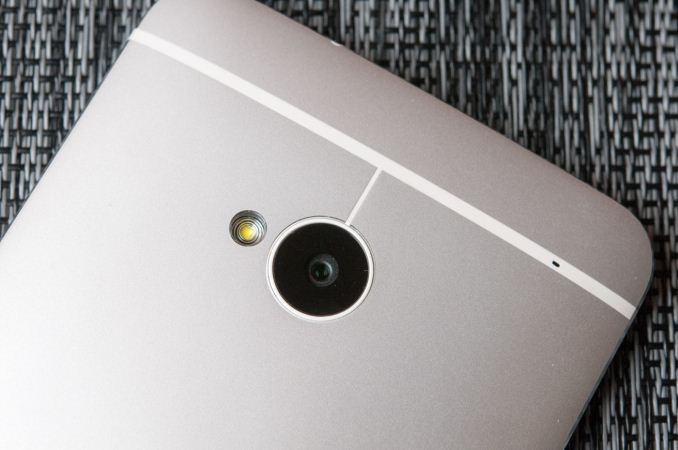
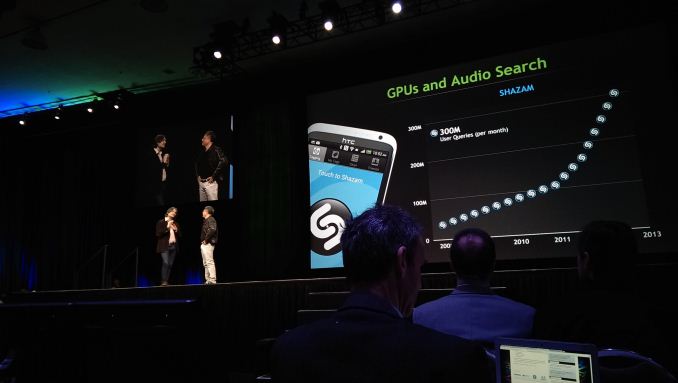

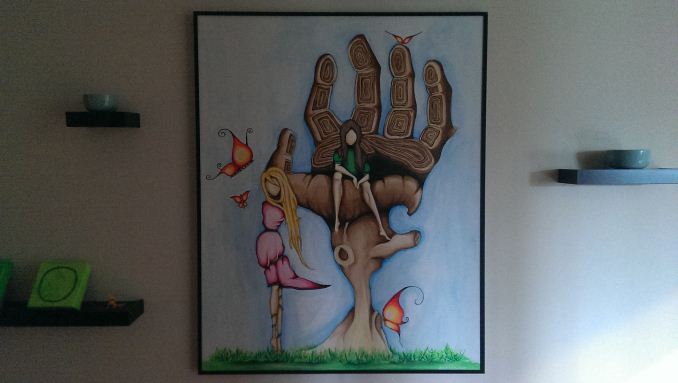
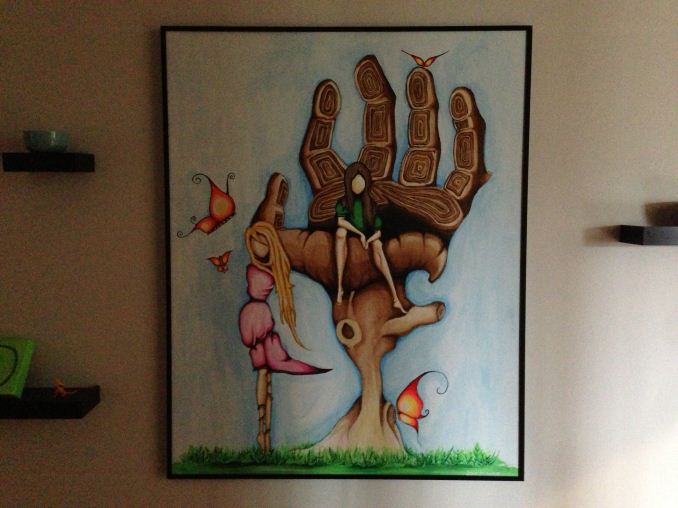
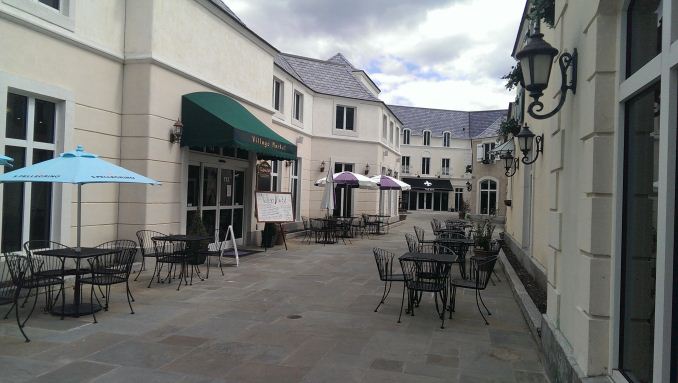








434 Comments
View All Comments
RicGrupe - Friday, March 22, 2013 - link
As a photographer, I can assure you that the amount of "megapixels" is not a determining factor to image quality.....but, rather a consideration.Your eyes will do the determining!
Smaller file sizes and the need for less storage, IMO, are more meaningful for this type of photography.
Death666Angel - Friday, March 22, 2013 - link
Nice first look. You are missing PPI for the iPhone5 in the table. :) Thanks for the metric units used!I doubt I'll be buying a smartphone in '13 (still very happy with my GNexus). But both the One and the S4 look nice. But I'd probably take an S4 over the One. Material choice is moot for me, all my smartphones get stuffed into full cover cases and I don't see them again unless I'm changing the SIM, the battery or the SD card. While I can tolerate Touchwiz I cannot stand Sense (though I'd use none in the long run). I also have less faith in HTC updating the software and the community always seems larger with Samsung devices. And I don't like that HTC locks the bootloader for non-developer devices. 32GB is great for the low-end configuration of the One. But I'd still take a 16GB S4 with mSD slot over 32GB onboard with no mSD slot. I don't use the camera on my phones for anything worth remembering a day later. So I really don't care much about either camera. SGS2 camera was very good. GNexus is fine as well. If all were equal, I'd chose the One over the S4 because of the camera though. As for screen, I like my AMOLED and I like 5". Coming from a 4.7" device, I would not upgrade to a 4.7" device if the competition was offering bigger screens. I'd take a Note2 if I was going to upgrade this year. Hell, maybe the Note3 will get me to upgrade. For me, the larger the better until ~6". I don't see myself using either Zoe or the highlights reel a lot either.
What is your distinction between enthusiasts and mainstream users. You say the One is geared towards enthusiasts while the S4 is for mainstream users. Based on what features do you make that assessment? I consider myself an enthusiasts (albeit with a limited budget) but I don't think the HTC One caters to me (see my paragraph above).
I hope the One sells well for HTC.
I got an email from my carrier some days ago that they were the firsts to send out HTC Ones worldwide. Seems like the people who ordered one from them will be getting it at the start of next week. :)
Pjotr - Friday, March 22, 2013 - link
You don't wanna make iPhone look bad, so you omitted the DPI on the screen for it?phillyry - Tuesday, March 26, 2013 - link
It's 306PPIGimpsUnlimited - Saturday, March 23, 2013 - link
Wait, this little phone as an 802.11 ac radio and yet I can't buy one for my laptop? What the #$%! I want 802.11 ac module wifi module for my laptop now.groundhogdaze - Saturday, March 23, 2013 - link
Can someone point out to me why it's so hard to include an SD Card slot? Is there some sort of patent royalty involve? Does it significantly drop battery life? "Because you don't need it" is not a strong case for excluding a feature that some folks are pretty fervent about. Many people do not need it but enough people still want it for it to be a marketable feature. Consumers are looking for the best bang for the buck, having an SD slot gives you a cheaper alternative than paying $100 for the next 32GB increment up. Listening to some of the folks on this thread, 32GB would all that you need, the manufacturers shouldn't even waste their time with the 64GB models. Is there some reason you don't want the slot? There might even be dirt cheap 128GB SD cards a year or two down the road - but you won't be able to use that unless your phone has a slot. Having extra storage allows us more ways to be creative with what we do with the devices. Why not include it?? "Oh 32GB is a loss leader, they can only make money if they sell 64GB to you. Poor manufacturers, boo hoo"... Don't give me that crap, I don't care. I am consumer. I want Bang for the Buck! I want Love me Long Time! Give it to me.Samsung teabagged HTC on the last go around - does HTC really want a repeat? Put the SD card slot in and be done with it...
tommo123 - Saturday, March 23, 2013 - link
IMO google don't want mSD so you have to use google drive and pay them for more space for your stuffhaze4peace - Sunday, March 24, 2013 - link
They chose to omit mSD slot for the form factor.piroroadkill - Sunday, March 24, 2013 - link
Yeah, just not true. Plenty of thin phones that have micro SD. Also, mSD would be "milli SD", no such thing exists, so surely it would be µSD if we're going to use an incorrect form of "micro SD" in the first place.haze4peace - Monday, March 25, 2013 - link
They didn't omit it for the thinness, but for the unibody design.